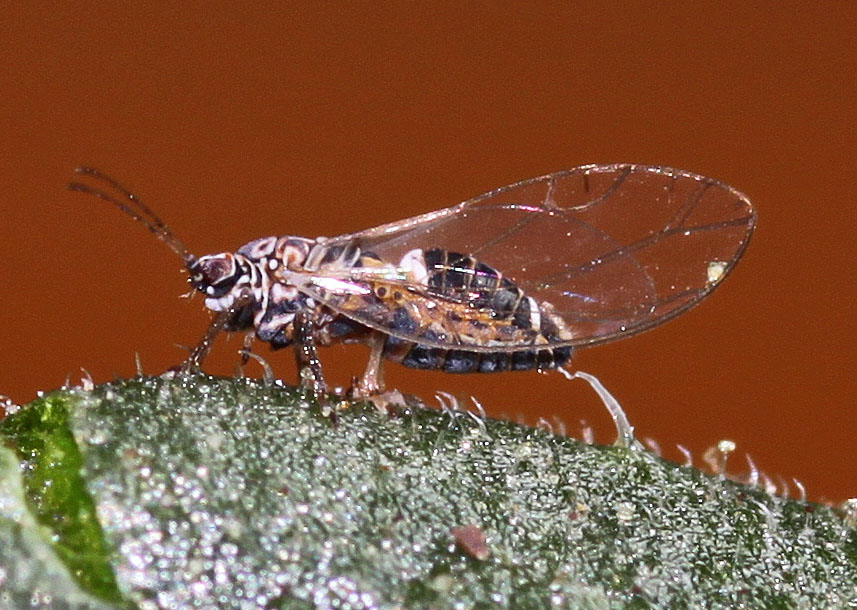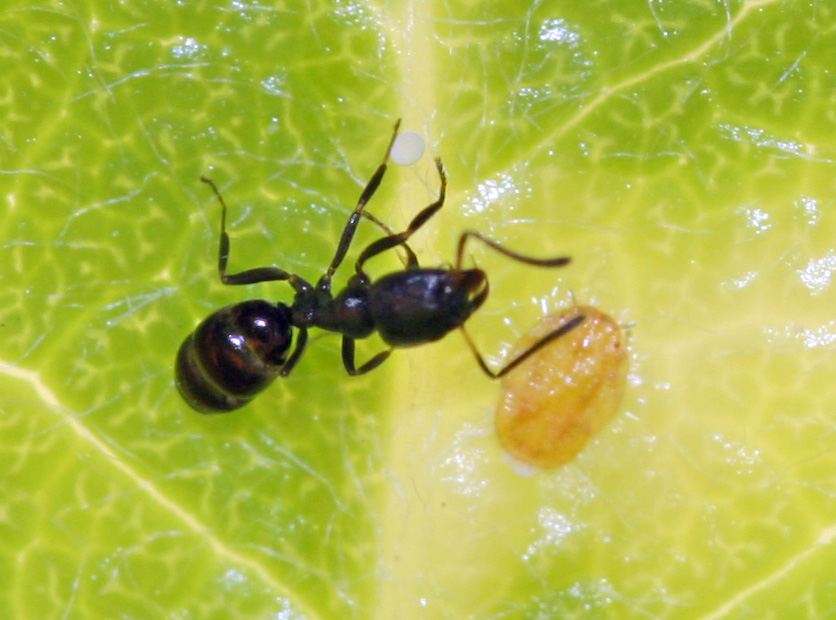You may have caught me talking about Psyllids, from time to time. Especially the Tomato-Potato Psyllid.
This is an insect that appeared in New Zealand around 2006 and it makes a mess of the two main hosts: Tomatoes and Potatoes.
 The Tomato-Potato Psyllid. Photo / Supplied
The Tomato-Potato Psyllid. Photo / Supplied
As a fanatic tomato grower, I always keep a serious eye out this thing and practice a lot of weed control (Solanum weeds – the overwintering hosts of my crops). I also use regular Neem sprays to stop the Psyllid nymphs (immatures) from developing on my tomatoes.
Like most Psyllids, they are sapsuckers; taking the sweet sugars out of the plant to extract Nitrogen for growth of their bodies. They excrete the sweet materials as “honeydew” which in itself is a great food for other insects, but also birds and certainly black, sooty mould.
Another Exotic Psyllid species came in the late 1990’s and is often found on Syzygium smithii, mostly known as “Monkey apple”, Lilly-Pilly, or the old name Acmena. It is often used to form fast-growing hedges.
Black hedges, especially in the warmer north, due to copious amounts of sooty mould.
Lilly-Pilly is considered a weed in our country, so the psyllid is perhaps helping to suppress this exotic plant somewhat.
But in NZ we have our own, Native species too:
On Pohutukawa and Rata, for instance (Trioza curta), and a species on Pittosporum (Trioza vitreoradiata).
Both these natives suck juices out of the leaves of their host, causing distortions and dimples.
Isn’t that causing some severe stress and damage to these native hosts?
The creation of the dimples is also no doubt under the influence of toxins or enzymes injected by the young, sedentary nymphs. But the astonishing thing is that the actual health of the Pohutukawa, rata or pittosporum is rarely, if ever, severely affected as a result of these psyllids. Mind you, they've been living together now for many millions of years, and the evolutionary processes will have reached a nice balance between the sucker and its host plant.
But when we take a detailed look at this symbiosis, we must ask ourselves the question why the Pohutukawa facilitates the psyllids by creating cosy little dimples?
The answer can be found at a surprising location: the rear end of the larvae. You see, that's where the sweet excrement is being produced.
 Pittosporum psyllid being “milked” by a native ant. Photo / Supplied
Pittosporum psyllid being “milked” by a native ant. Photo / Supplied
Native ant species will patrol the psyllids and collect any sugary waste products that may become available, and while doing so, they protect the psyllid nymphs and the leaves they are living on! Indeed, Pohutukawa and rata leaves with psyllids on them are almost always without any chewing damage.
LISTEN ABOVE
Take your Radio, Podcasts and Music with you










